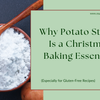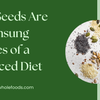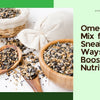Exploring the World of Wholefood Flours: Nutritional Benefits and Uses
- by S R
Exploring the World of Wholefood Flours
For anyone looking to make more mindful choices in the kitchen—whether for health reasons, sustainability, or a love of natural ingredients—the variety of flours available today can be both exciting and overwhelming. From nutty almond flour to earthy buckwheat and versatile rice flour, each has its own nutritional perks and best uses in cooking and baking. Here’s your complete guide to understanding and using whole food flours with confidence.
What Are Wholefood Flours?
Wholefood flours are made from grains, nuts, seeds, or legumes that are minimally processed and rich in natural nutrients. Unlike refined flours, they retain their fibre, vitamins, and minerals—bringing incredible flavour, texture, and nourishment to your recipes.
Nutritional Benefits of Wholefood Flours
Each flour offers something unique. Here are a few standouts:
1. Almond Flour
- Nutritional boost: Packed with healthy fats, protein, and vitamin E.
- Health benefits: Supports heart health and helps maintain stable blood sugar levels.
- Best used for: Cookies, cakes, and breading for chicken or fish.
- Nutritional boost: High in fibre and low in carbs.
- Health benefits: Promotes digestive health and keeps you feeling full longer.
- Best used for: Pancakes, muffins, and energy bites (but remember—it absorbs lots of liquid, so use sparingly).
- Nutritional boost: Rich in antioxidants, iron, and B vitamins.
- Health benefits: Supports cardiovascular health and steady energy levels.
- Best used for: Pancakes, soba noodles, and rustic bread recipes.
- Nutritional boost: A great source of magnesium and fibre.
- Health benefits: Gentle on digestion and naturally hypoallergenic.
- Best used for: Bread, sauces, and tempura batters.
- Nutritional boost: High in protein and folate.
- Health benefits: Helps keep you full and supports healthy muscles and metabolism.
- Best used for: Flatbreads, fritters, and savoury bakes like socca.
6. Oat Flour
- Nutritional boost: Rich in soluble fibre that supports heart health.
- Health benefits: Helps regulate cholesterol and blood sugar levels.
- Best used for: Muffins, cookies, and breakfast bars.
Tips for Baking with Wholefood Flours
- Blend for balance: Most recipes benefit from mixing two or more flours—such as almond and rice flour—for better texture and flavour.
- Add a binder: Ingredients like psyllium husk, chia seeds, or flaxseed can help improve structure and elasticity.
- Adjust moisture: Some flours (like coconut) absorb more liquid, so tweak your recipes accordingly.
- Experiment freely: Start with recipes developed for alternative flours and gradually adapt your favourites.
Why Choose Wholefood Flours
Wholefood flours are made from minimally processed ingredients that retain their natural nutrients, fibre, and flavour. They support a healthier lifestyle and promote sustainability by embracing diverse crops and traditional farming practices.
The Bottom Line
Baking with whole foods flours isn’t about compromise—it’s about discovering new textures, flavours, and nutrients that nourish your body in a whole new way. Whether you’re whipping up a batch of almond flour brownies or a loaf of hearty buckwheat bread, whole food flours make wholesome, delicious eating accessible to everyone.
Interested in trying our flours?
Explore our range of naturally sourced, minimally processed flours—crafted to bring nutrition, taste, and sustainability to every bake.





